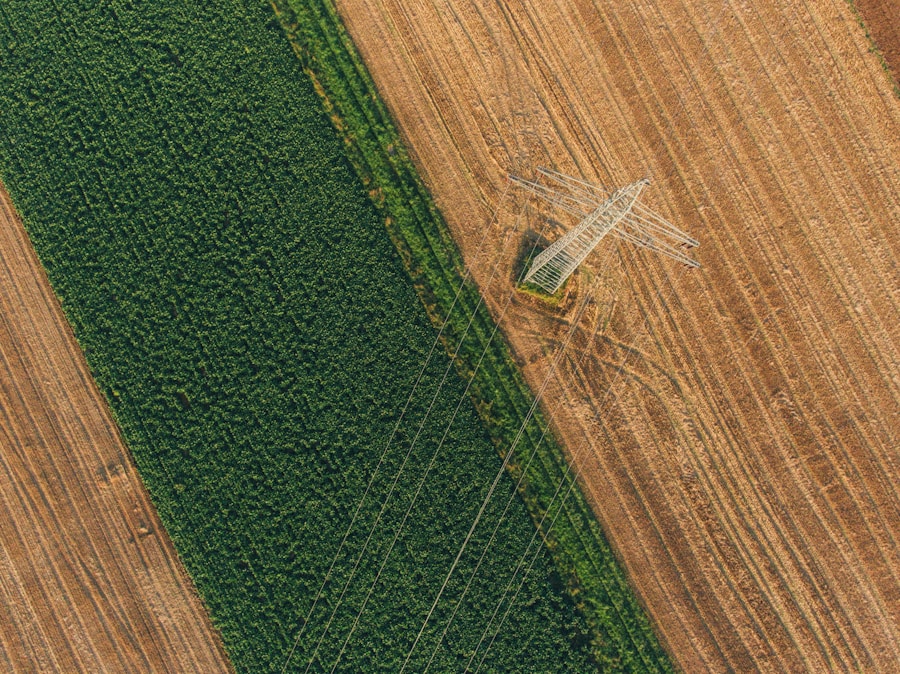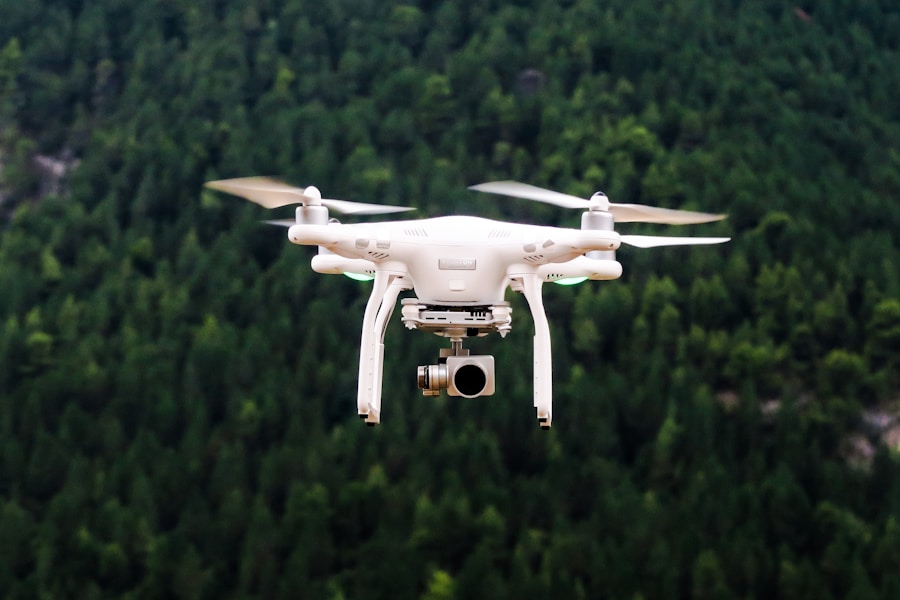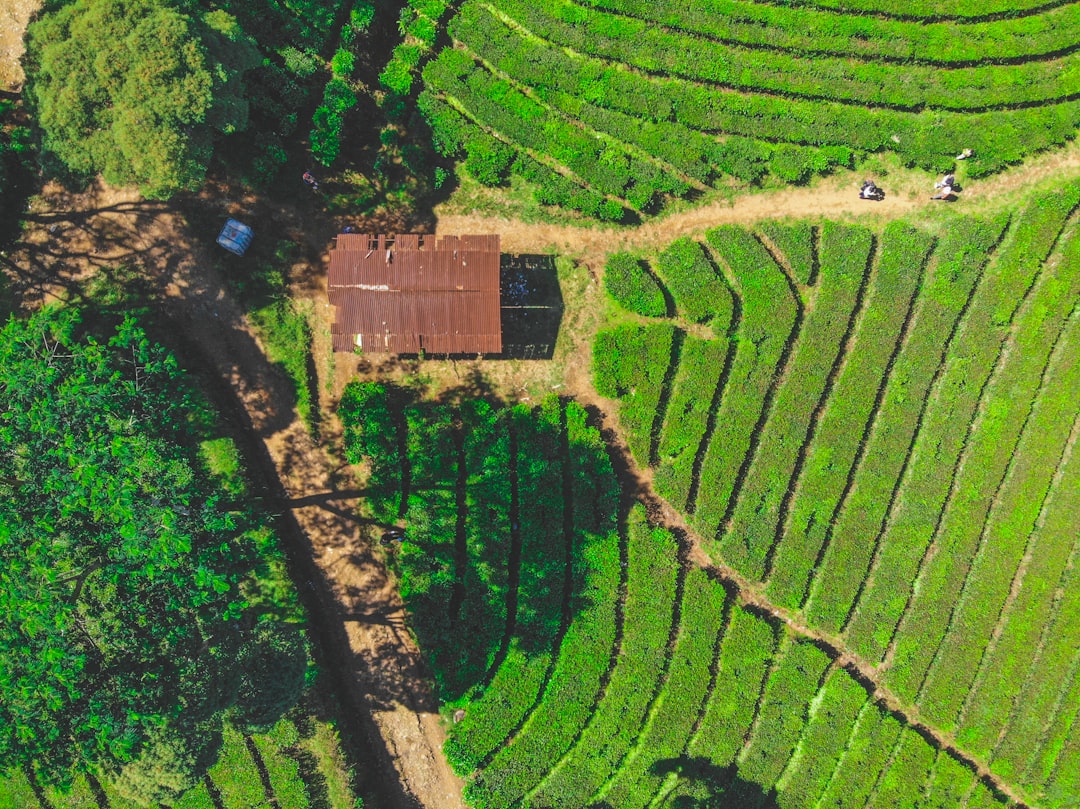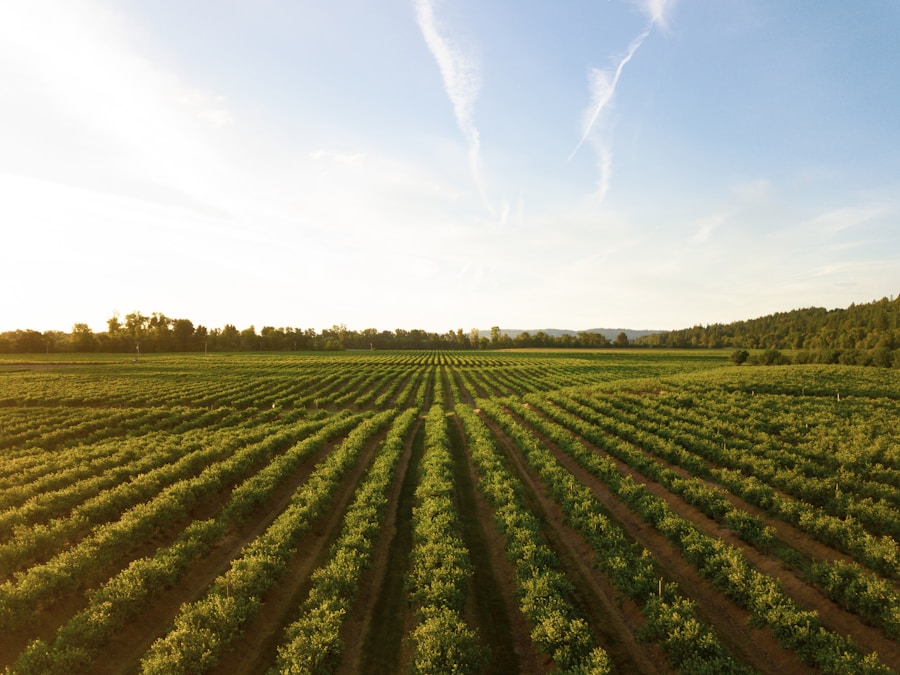[:ninu]Ni awọn ọdun aipẹ, Eto ogbin ti jẹri iṣẹ-ṣiṣe pataki ni isọdọmọ imọ-ẹrọ giga Drip. Awọn ọkọ ayọkẹlẹ ti a ko si (Uves), wọpọ tọka si bi drones, ti yipada ọna awọn agbẹ ṣakoso awọn irugbin ati ilẹ wọn. Ni ipese pẹlu awọn kamẹra giga ati awọn sensosi, Awọn aworan ọkọ ofurufu ti o latale-latọna jijin, Pese awọn agbẹ pẹlu awọn oye ti o niyelori sinu awọn irugbin wọn, ilẹ, ati agbese r'oko.
Gbaye ti awọn drones ni ogbin le le ṣe afihan agbara wọn lati ni kiakia ati daradara bo awọn agbegbe nla ti ilẹ, Awọn agbe agbejade pẹlu data gidi-akoko lati ṣe awọn ipinnu alaye. Integration ti imọ-ẹrọ Drione ni ogbin ni ṣiṣi awọn aye titun fun awọn agbe lati ṣe afikun awọn iṣe iṣakoso irugbin wọn. Nipa imuṣiṣẹ awọn drones, Awọn agbẹ le ṣe atẹle ilera irugbin, detect areas of pest infestation or disease, and assess the overall condition of their fields.
This enables farmers to swiftly identify and address issues that may impact crop yield, nikẹhin ti yori si awọn iṣẹ ogbin pupọ siwaju ati ti o ni iyara. Siwaju sii, drone mapping technology allows farmers to create detailed maps of their fields, providing them with valuable information about soil composition, awọn ipele ọrinrin, and topography. This data can be utilized to create precise planting and irrigation plans, resulting in more efficient water and resource management.
Awọn ọna itẹwe bọtini
- Imọ-ẹrọ Amẹrika Din ohun elo ti n yipada n ṣe agbekalẹ awọn iṣe ogbin nipasẹ ipese alaye ati data gidi fun iṣakoso irugbin na.
- Awọn anfani ti lilo awọn drones fun ogbin pẹlu ṣiṣe ti o pọ si, Awọn idiyele ti o dinku, ati awọn irugbin na ni ilọsiwaju.
- Pelu awọn anfani, Awọn italaya ati awọn idiwọn wa lati ronu, gẹgẹbi awọn ihamọ ilana ilana ati awọn ọran imọ-ẹrọ.
- Ṣepọ imọ-ẹrọ Lilọ kiri si awọn iṣẹ ọṣẹ le ja si ogbin alagbero diẹ sii ati iṣakoso agbegbe ti o dara julọ.
- Successful case studies demonstrate the potential of drone mapping in farming, but regulatory and ethical considerations must also be taken into account for responsible use.
Bawo ni awọn drones n fa awọn iṣẹ ogbin
Imudarasi na ni imudara
Drones have changed the game by allowing farmers to quickly and accurately survey their fields from above, providing them with a comprehensive view of their entire operation. This aerial perspective enables farmers to identify potential issues early on, gẹgẹbi awọn ailagbara ijẹun, irrigation problems, or pest outbreaks, allowing them to take proactive measures to address these issues.
Advanced Data Collection
Siwaju sii, drones have the ability to collect a wide range of data beyond just visual images. They can be equipped with various sensors, gẹgẹ bi ọpọlọpọ awọn kamẹra gbona, to capture detailed information about crop health and environmental conditions. This data can be used to create precise maps and models of the farmland, providing farmers with valuable insights into the overall health and productivity of their crops.
Optimized Crop Management
Nipa mimu data yii, Awọn agbẹ le ṣe awọn ipinnu alaye nipa dida, ajilẹ, ati iṣakoso kokoro, nikẹhin yorisi awọn irugbin irugbin irugbin ati ṣiṣe ṣiṣe iṣeeṣe. Apapọ, Awọn drones n ṣe atunṣe awọn iṣe ogbin nipasẹ pese awọn agbe pẹlu irinṣẹ ti o lagbara lati ṣe eso awọn ọgbọn iṣiṣẹ wọn.
Awọn anfani ti lilo awọn drones fun ogbin ati iṣakoso irugbin na
Lilo awọn drones fun ogbin ati iṣakoso irugbin na nfunni ni ọpọlọpọ awọn anfani fun awọn agbe. One of the most significant advantages of using drones is their ability to cover large areas of land quickly and efficiently. This allows farmers to survey their fields more frequently and with greater accuracy than traditional methods, providing them with real-time data to make informed decisions about their crops.
Afikun, drones can access hard-to-reach or hazardous areas of the farm that may be difficult or dangerous for humans to access, such as steep slopes or dense vegetation. This enables farmers to gather comprehensive data about their entire operation, leading to improved crop management practices. Siwaju sii, drones provide farmers with a cost-effective solution for monitoring and managing their crops.
Traditional methods of crop monitoring often require significant time and labor resources, as well as expensive equipment such as satellite imagery or manned aircraft. Drones offer a more affordable alternative, allowing farmers to collect high-quality data at a fraction of the cost. This cost-effectiveness makes drone technology accessible to a wide range of farmers, regardless of the size or scale of their operation.
Afikun, the use of drones can lead to more sustainable farming practices by reducing the need for chemical inputs and water usage through more precise and targeted crop management.
Overcoming Challenges and Limitations of Drone Mapping in Agriculture
| Drone Mapping Technology | Benefits |
|---|---|
| Increased Efficiency | Reduces time and labor required for traditional field mapping |
| Oyọ ogbin | Ngbanilaaye fun ohun elo ti afojusun ti awọn orisun orisun da lori alaye data aaye |
| Mu ibojuwo | Pese data akoko gidi lori ilera irugbin ati eso ti o ni agbara |
| Iye owo ifowopamọ | Dinku awọn idiyele titẹ ati mu awọn ere idaraya oko |
Lakoko ti imọ-ẹrọ Agbaaiye nfunni ni awọn anfani lọpọlọpọ fun ogbin ati iṣakoso irugbin na, Awọn italaya tun wa ti o nilo lati koju. Ọkan ninu awọn italaya akọkọ ni eka ti sisẹ ati itupalẹ awọn oye nla ti awọn data ti a gba nipasẹ awọn drones. Awọn aworan ipinnu giga ati data sensọ le ṣe ina awọn ipilẹ data ti o le nira fun awọn agbẹ lati tumọ si ati lo ni deede.
Afikun, Awọn idiwọn le wa ni deede ati igbẹkẹle ti data Drone, pataki ni awọn ipo ayika nija bi awọn efuufu to lagbara tabi ina kekere. Awọn okunfa wọnyi le ni ipa didara awọn data ti a gba nipasẹ awọn drones, O le yorisi aiṣe deede tabi alaye ti ko pe fun awọn agbe. Ipenija miiran jẹ ilana ilana ilana ti o yika lilo awọn drones ni ogbin.
Ọpọlọpọ awọn orilẹ-ede ti ni awọn ilana ti o muna n ṣakoso lilo awọn drones, Paapa ni awọn eto ogbin nibiti wọn le ṣe aabo tabi awọn ifiyesi aṣiri. Awọn agbẹ gbọdọ lọ kiri awọn ilana wọnyi lati rii daju ibamu pẹlu awọn ihamọ airspace ati awọn ikoko awọn ofin nibi lilo awọn drones wọn. Afikun, Awọn ipinnu ati otitọ ti o jọmọ lilo awọn drones ni ogbin, gẹgẹ bi awọn ipa ti o pọju lori ẹranko igbẹ tabi awọn ohun-ini aladugbo.
Awọn italaya wọnyi saami iwulo fun iwadi ati idagbasoke ni imọ-ẹrọ Drion lati ṣalaye lilo iṣeduro ati rii daju lilo iṣeduro ni awọn eto ogbin.
Ọjọ iwaju ti ogbin: Imọ-ẹrọ Drene ṣepọ fun ogbin alagbero
Ọjọ iwaju ti ogbin ni asopọ pẹkipẹki si isopọ ti imọ-ẹrọ Drene fun ogbin alagbero. Bi awọn olugbe agbaye naa tẹsiwaju lati dagba, Ifara sipo si lori awọn agbe lati gbejade ounjẹ diẹ sii pẹlu awọn orisun to lopin. Drones offer a powerful tool for farmers to optimize their crop management practices and improve overall farm productivity in a sustainable manner.
By leveraging drone technology, farmers can make more informed decisions about resource allocation, leading to reduced environmental impact and improved efficiency in food production. Afikun, drones can play a key role in precision agriculture, enabling farmers to apply inputs such as water, fertilizers, and pesticides more precisely and effectively. Siwaju sii, the future of farming will likely see continued advancements in drone technology to address current limitations and challenges.
Research and development efforts are focused on improving the accuracy and reliability of drone data collection, as well as developing more advanced sensors and analytics tools for farmers to utilize. Afikun, there is potential for the integration of artificial intelligence (Ani) and machine learning algorithms to process drone data and provide actionable insights for farmers. Awọn ilosiwaju wọnyi yoo mu awọn agbe lati yago fun agbara kikun ti imọ-ẹrọ Drene fun ogbin alagbero, nikẹhin ti o yori si iṣelọpọ ounje daradara ati iṣakoso orisun.
Awọn ijinlẹ ọran: Imuse asese ti afe oju-omi kekere ni ogbin
Abojuto Ilera irugbin ni awọn ọgba-ajara
Awọn iṣuro ti a ni ipese pẹlu awọn kamẹra awọn kamẹra ti a ti lo lati ṣe atẹle eso ajara fun awọn ami aapọn tabi arun, Gba awọn alakoso ọgba-ajara lati gba igbese ti a pinnu lati mu ilera na ni ilọsiwaju. This approach has led to improved grape quality and yield while reducing the need for chemical inputs.
Monitoring Soil Erosion on Farmland
Drones have been used to create detailed topographic maps of fields, enabling farmers to identify areas at risk of erosion and implement conservation measures to protect soil health.
Large-Scale Farming Operations
In Australia, drones have been used to monitor wheat crops for signs of disease or nutrient deficiencies, allowing farmers to make timely interventions to protect crop yield. In the United States, drones have been used for precision planting in corn fields, enabling farmers to optimize seed placement for improved germination rates. These case studies highlight the diverse applications of drone mapping technology in farming and demonstrate its potential to improve crop management practices across different agricultural settings.
Regulatory and Ethical Considerations for Drone Use in Agriculture
Lilo awọn drones ni ogbin mu awọn ilana ilana iṣiro pataki ati awọn ero inu ti gbọdọ ni sọrọ lati rii daju lilo iṣeduro. Ni ọpọlọpọ awọn orilẹ-ede, Awọn ilana ti o muna wa iṣakoso iṣẹ ti awọn drones ni airspace, Paapa ni awọn eto ogbin nibiti wọn le ṣe awọn ewu ailewu lati ṣe itọju ọkọ ofurufu tabi awọn ohun-ini aladugbo. Awọn agbẹ gbọdọ ni ibamu pẹlu awọn ofin wọnyi nipa gbigba awọn iyọọda ti o yẹ tabi awọn iwe-aṣẹ fun iṣẹ drone lori awọn oko wọn.
Afikun, there may be privacy concerns related to the use of drones for capturing images or data on farmland. Farmers must consider ethical considerations when using drones to ensure that they do not infringe on the privacy rights of neighboring properties or individuals. Siwaju sii, there are ethical considerations related to wildlife conservation when using drones in agriculture.
Drones have the potential to disturb wildlife or nesting birds in agricultural settings, particularly during sensitive periods such as breeding season. Awọn agbẹ gbọdọ gba awọn iṣọra lati dinku awọn ipa ti o ni idinku lori ẹranko igbẹ nigba lilo awọn drones lori awọn oko wọn. Afikun, Awọn ero aiṣe-ọrọ le wa ti o jọmọ si aṣiri data nigba ti o ba n gba alaye nipa Fardeland ni lilo awọn drones.
Awọn agbẹ gbọdọ rii daju pe wọn mu data Drane dojukọ ati aabo alaye ifura nipa awọn iṣiṣẹ wọn lati iraye si laigba tabi lo. Ni paripari, imọ-ẹrọ ti n ṣafihan Drine ti a jade bi ọpa ti o lagbara fun awọn iṣe igbẹ ati imudara iṣakoso irura ni ogbin. The use of drones offers numerous benefits for farmers, pẹlu ṣiṣe ti o pọ si, cost-effectiveness, and sustainability in food production.
While there are challenges and limitations associated with drone technology in agriculture, ongoing research and development efforts are focused on addressing these issues to ensure responsible use. Ọjọ iwaju ti ogbin ni asopọ pẹkipẹki si isopọ ti imọ-ẹrọ Drene fun ogbin alagbero, enabling farmers to optimize their crop management practices and improve overall farm productivity. By navigating regulatory and ethical considerations related to drone use in agriculture, Awọn agbẹ le ṣe ipa agbara kikun ti imọ-ẹrọ yii lakoko ti o ni oye lodidi ati awọn iṣẹ iṣe ti o wa lori oko wọn.
Faaq
Kini imọ-ẹrọ ti a dì?
Imọ-ẹrọ Agbaaiye ti Drine ni ogbin n tọka si lilo awọn ọkọ ti ko ni ibamu (Uves) ni ipese pẹlu awọn kamẹra ati awọn sensosi lati ya awọn aworan ipinnu giga ti Farmland. Awọn aworan wọnyi lẹhinna ni ilọsiwaju lati ṣẹda awọn maapu alaye ati awọn awoṣe 3D ti ilẹ naa, Ewo ni a le lo fun awọn idi ogbin pupọ.
Bawo ni imọ-ẹrọ ti a lo?
Drone mapping technology is used in farming for tasks such as crop monitoring, soil analysis, irrigation management, ati iṣakoso kokoro. The high-resolution images and data collected by drones can help farmers make informed decisions about their crops and land, leading to improved efficiency and productivity.
What are the benefits of using drone mapping technology in farming?
The benefits of using drone mapping technology in farming include improved crop management, reduced resource usage, early detection of crop diseases and pests, and increased overall productivity. Drones can cover large areas of farmland quickly and provide detailed, real-time information to farmers.
Are there any regulations or restrictions on using drones in farming?
Yes, there are regulations and restrictions on using drones in farming, which vary by country. Ni ọpọlọpọ awọn aye, drone operators must obtain a license or permit to fly drones for commercial purposes, including farming. Afikun, there are rules regarding flight altitude, proximity to airports, and privacy concerns that drone operators must adhere to.
Kini ọjọ iwaju ti imọ-ẹrọ ere idaraya ti Drene ni ogbin?
Ọjọ iwaju ti imọ-ẹrọ ere idaraya ti a ti nwa ni igbega, Pẹlu ilọsiwaju ilọsiwaju ni awọn agbara Drone, awọn sensọ, ati sisẹ data. Bi imọ-ẹrọ ṣe, Awọn drones ni a nireti lati mu ipa nla paapaa ni ogbin ti o tobi, Iranlọwọ awọn agbẹ jẹ ki awọn iṣẹ wọn jẹ awọn iṣiṣẹ wọn ki o ṣe diẹ alagbero ati awọn ipinnu ọrẹ ti ayika.[:]








